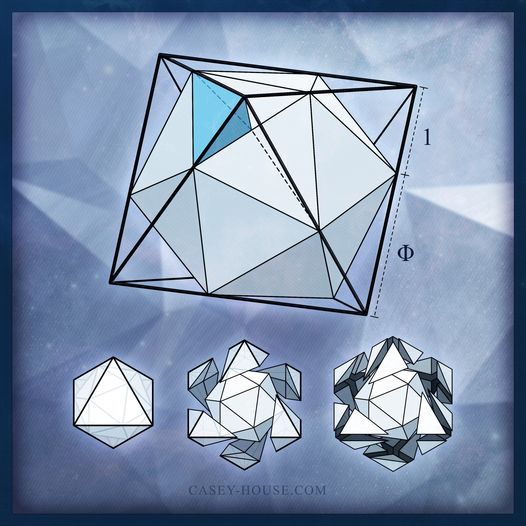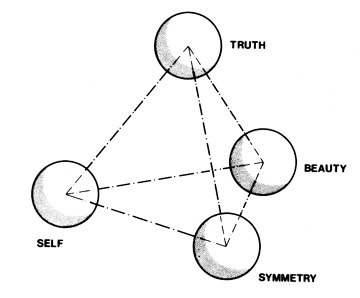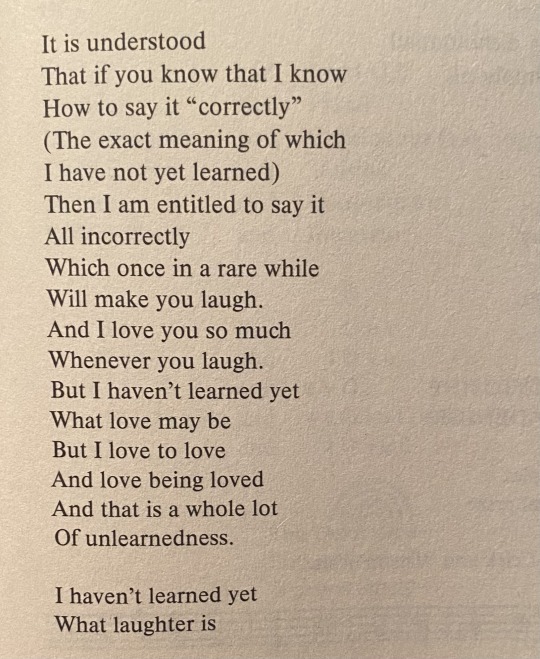#buckminster fuller
Explore tagged Tumblr posts
Text

Geodesic dome by Buckminster Fuller, 1974.
(MOMA)
807 notes
·
View notes
Text

1938 Dymaxion
A car of the future, a rocket ship on wheels. The 1938 Dymaxion was designed by American inventor Buckminster Fuller during the great depression as a vehicle that might one day fly, land and drive.
98 notes
·
View notes
Text

nevver: The Day After You Die
* * * *
"Our survival won’t depend on political or economic systems. It’s going to depend on the courage of the individual to speak the truth, and to speak it lovingly and not destructively. It’s saying what you really know and feel is the truth, in all directions. Our greatest vulnerability lies in the amount of misinformation and mis-conditioning of humanity."
~ Buckminster Fuller
19 notes
·
View notes
Text

You can insert an icosahedron inside an octahedron.
If the edge length of the octahedron ist 1 + Phi (1.618), the egde length of the icosahedron is SQRT(2).
A friend showed me this picture by Casey house:

[Source: Caseys website ]
And I had to draw it in isometric projection.
Very neat.
One could also make that even further and put an octahedron into the icosahedron and so on...
#buckminster fuller#bucky#polyhedra#buckys modules#geometry#shapes#octahedron#icosahedron#isometric#isometric projection
123 notes
·
View notes
Text

Geodesic Dome, Buckminster Fuller, Expo 67 Montreal.
208 notes
·
View notes
Text
Buckminster Fuller: Synergetics and Systems

Synergetics
Synergetics, concept introduced by Buckminster Fuller, is an interdisciplinary study of geometry, patterns, and spatial relationships that provides a method and a philosophy for understanding and solving complex problems. The term “synergetics” comes from the Greek word “synergos,” meaning “working together.” Fuller’s synergetics is a system of thinking that seeks to understand the cooperative interactions among parts of a whole, leading to outcomes that are unpredicted by the behavior of the parts when studied in isolation.
Fuller’s understanding of systems relied upon the concept of synergy. With the emergence of unpredicted system behaviors by the behaviors of the system’s components, this perspective invites us to transcend the limitations of our immediate perception and to perceive larger systems, and to delve deeper to see relevant systems within the situation. It beckons us to ‘tune-in’ to the appropriate systems as we bring our awareness to a particular challenge or situation.
He perceived the Universe as an intricate construct of systems. He proposed that everything, from our thoughts to the cosmos, is a system. This perspective, now a cornerstone of modern thinking, suggests that the geometry of systems and their models are the keys to deciphering the behaviors and interactions we witness in the Universe.
In his “Synergetics: Explorations in the Geometry of Thinking” Fuller presents a profound exploration of geometric thinking, offering readers a transformative journey through a four-dimensional Universe. Fuller’s work combines geometric logic with metaphors drawn from human experience, resulting in a framework that elucidates concepts such as entropy, Einstein’s relativity equations, and the meaning of existence. Within this paradigm, abstract notions become lucid, understandable, and immediately engaging, propelling readers to delve into the depths of profound philosophical inquiry.
Fuller’s framework revolves around the principle of synergetics, which emphasizes the interconnectedness and harmony of geometric relationships. Drawing inspiration from nature, he illustrates that balance and equilibrium are akin to a stack of closely packed oranges in a grocery store, highlighting the delicate equilibrium present in the Universe. By intertwining concepts from visual geometry and technical design, Fuller’s work demonstrates his expertise in spatial understanding and mathematical prowess. The book challenges readers to expand their perspectives and grasp the intricate interplay between shapes, mathematics, and the dimensions of the human mind.
At its core, “Synergetics” presents a philosophical inquiry into the nature of existence and the human thought process. Fuller’s use of neologisms and expansive, thought-provoking ideas sparks profound contemplation. While some may find the book challenging due to its complexity, it is a testament to Fuller’s intellectual prowess and his ability to offer unique insights into the fundamental workings of the Universe, pushing the boundaries of human knowledge and transforming the fields of design, mathematics, and philosophy .
When applied to cognitive science, the concept of synergetics offers a holistic approach to understanding the human mind. It suggests that cognitive processes, rather than being separate functions, are interconnected parts of a whole system that work together synergistically. This perspective aligns with recent developments in cognitive science that view cognition as a complex, dynamic system. It suggests that our cognitive abilities emerge from the interaction of numerous mental processes, much like the complex patterns that emerge in physical and biological systems studied under synergetics.
In this context, geometry serves as a language to describe this cognitive architecture. Just as the geometric patterns in synergetic structures reveal the underlying principles of organization, the ‘geometric’ arrangement of cognitive processes could potentially reveal the principles that govern our cognitive abilities. This perspective extends Fuller’s belief in the power of geometry as a tool for understanding complex systems, from the physical structures he designed to the very architecture of our minds. It suggests that by studying the ‘geometry’ of cognition, we might gain insights into the principles of cognitive organization and the nature of human intelligence.

Systems
Fuller’s philosophy underscored that systems are distinct entities, each with a unique shape that sets them apart from their surroundings. He envisioned each system as a tetrahedron, a geometric form with an inside and an outside, connected by a minimum of four corners or nodes. These nodes, connected by what Fuller referred to as relations, serve as the sinews that hold the system together. These relations could manifest as flows, forces, or fields. Fuller’s philosophy also emphasized that systems are not isolated entities. At their boundaries, every node is linked to its surroundings, and all system corners are ‘leaky’, either brimming with extra energy or in need of energy.
Fuller attributed the properties and characteristics of systems to what he called generalized principles. These are laws of the Universe that hold true everywhere and at all times. For instance, everything we perceive is a specific configuration of energy or material, and the form of this configuration is determined by these universal principles.
Fuller’s philosophy also encompassed the idea that every situation is a dance of interacting systems. He encouraged us to explore the ways in which systems interact within and with each other. He saw each of us as part of the cosmic dance, continually coupling with other systems. This coupling could be as loose as the atoms of air in a room, or as flexible as molecules of water flowing.
We find that precession is completely regenerative one brings out the other. So I gave you the dropping the stone in the water, and the wave went out that way. And this way beget that way. And that way beget that way. And that’s why your circular wave emanates. Once you begin to get into “precession” you find yourself understanding phenomena that you’ve seen a stone falling in the water all of your life, and have never really known why the wave does just what it does.
Fuller’s concept of precession, or systems coupling, is a testament to his deep understanding of systems and their interactions. He described how we sometimes orbit a system, such as a political movement or an artistic method. Our orbit remains stable when the force that attracts us is dynamically balanced by the force that propels us away. This understanding of precession allows us to comprehend phenomena that we have observed all our lives, yet never truly understood why they behave as they do. Fuller’s teachings on systems and their inherent geometry continue to illuminate our understanding of the Universe and our place within it.
#geometrymatters#geometry#cognitive geometry#geometric cognition#buckminster fuller#science#research#math#architecture#consciousness#perception#synergy#tensegrity
50 notes
·
View notes
Text

Buckminster Fuller, from How Little I Know
42 notes
·
View notes
Text

15 notes
·
View notes
Text

Most of our wealth, our capacity to nurture life by intelligent design, is invisible for two reasons. First, there is the historical fact that we have been conditioned to accept species failure and only individual success. That is, we have been trained to believe “there is enough for me, or enough for you, but not enough for both of us." That conditioning is so powerful that we automatically think in terms of me or you, not both, so we don't notice that the whole species is now capable of success. Second, since Marconi, most of our wealth is literally invisible. I am not just referring to electronic waves and information systems, but to such things as alloys, for instance. I can show you two bars of metal that look exactly alike. To traditional thinking, these bars must contain the same amount of wealth, in terms of how much we can get out of each pound of them. In scientific fact, the second bar contains many hundred times more wealth than the first, because it delivers more. Unfortunately, this wealth is invisible to the naked eye; you need microscopes to see it and the science of chemistry to understand it. All of our problems result from the fact that for more than eighty years we have been creating wealth in that form, invisible wealth that politicians cannot see or understand, so our nations are all still acting on obsolete ‘Malthusian principles.
High Times Magazine, 1980s : THC : Free Download, Borrow, and Streaming : Internet Archive
12 notes
·
View notes
Text

Dymaxion House by Buckminster Fuller in Rose Hill, Kansas, 1948.
#dymaxion#dymaxion house#buckminster fuller#architecture#design#future#futuristic#retrofuture#kansas#wichita#rose hill#1940s
266 notes
·
View notes
Text

4 notes
·
View notes
Text

"We are not going to be able to operate our Spaceship Earth successfully for much longer unless we see it as a whole spaceship and our fate as common. It has to be everybody or nobody."
~ Buckminster Fuller
12 notes
·
View notes
Text

A visual study of the Icosahedron inside an Octahedron - and the remaining tetrahedral modules
The tetrahedral modules:
Buckminster Fuller came up with these modules and called them "S modules" or "S quanta modules".
Here is a helpful summary:

[Source (PDF) | A Fuller Explanation: The Synergetic Geometry of R. Buckminster Fuller, 1987]
#polyhedra#polyhedron#buckminster fuller#s-modules#modules#geometry#icosahedron#octahedron#platonic solids#tetrahedron#irregular tetrahedron#math art#hexagon#hexagrid#hexagon grid#mathy art#isometric#isometric projection#isometry
53 notes
·
View notes
Text

Fuller’s Earth - A Day with Bucky and the Kids by Richard J. Brenneman
Book cover design: Akira Uji
フラーがぼくたちに話したこと (めるくまーる, 1990年)
8 notes
·
View notes

